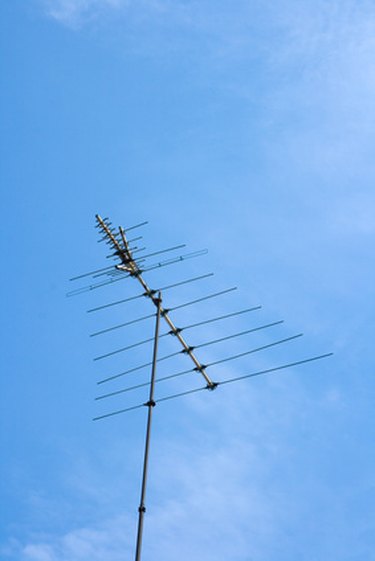Things You'll Need
Screwdriver set
Ground-rod clamp (from hardware store)
Pair of wire cutters/snips

Every home, every rooftop antenna and every metal mast or tower should be connected to an exterior ground rod driven into the ground--with the copper wire running to the rod in the most direct, shortest distance possible. Ground rods protect against high voltage from nearby lightning strikes and also improve the performance of all electrical appliances. However, a ground wire and rod system is only as good as the method used to connect the wire to the ground rod.
Step 1
Inspect the location where the copper wire has been run from the object down to the ground to ensure the wire has been routed in the shortest and most direct way to the grounding rod as possible.
Video of the Day
Step 2
Use a screwdriver to loosen the set screw on the grounding rod clamp so that you may easily slide the clamp over the rod. Slide the grounding clamp about 2 to 4 inches down the rod, from the top, and then tighten the set screw so the clamp is attached securely to the rod.
Step 3
Locate the wire receptacle slot on the grounding clamp and the slot's accompanying set screw. Hold the tip of the copper wire in the slot as you use a screwdriver to loosen the wire clamp screw. Continue loosening this set screw until the copper wire is able to pass through the slot easily. Pull the copper wire through the slot until the wire is pulled tight. Tighten down the set screw so the wire is clamped in the slot firmly, and then use wire cutters to remove any excess copper wire below the clamp for a cleaner appearance.
Warning
Never attach a copper wire to a grounding rod when there is a thunderstorm within 15 to 20 miles of your location, especially if the wire is already connected to a metal object that extends into the air. If you are able to hear thunder in the distance, the storm is close enough to cause lightning in your area. Wait for any storms to pass before connecting your wire to the grounding rod.
Video of the Day